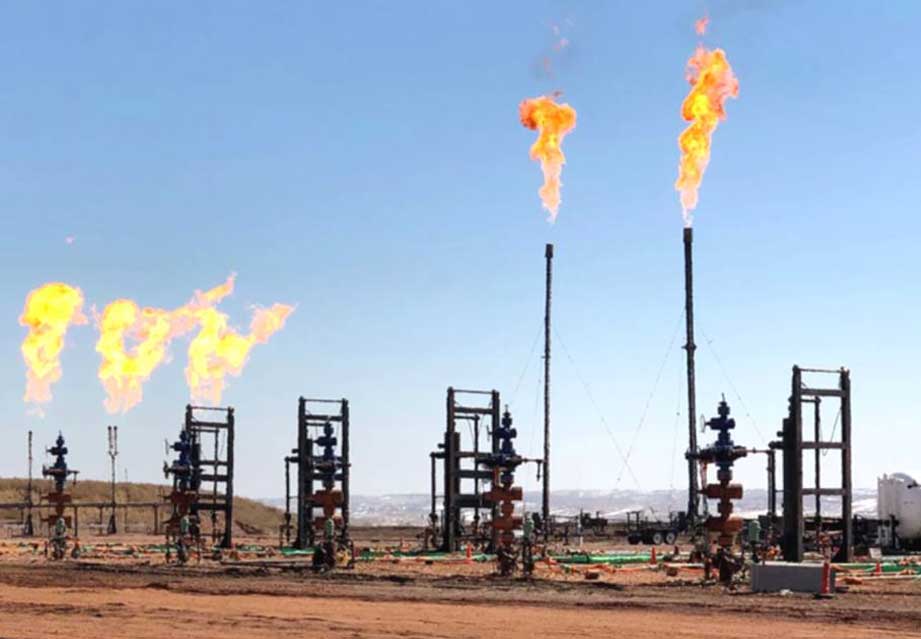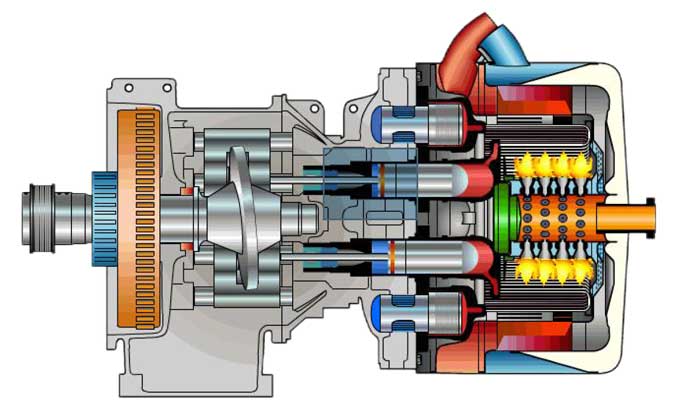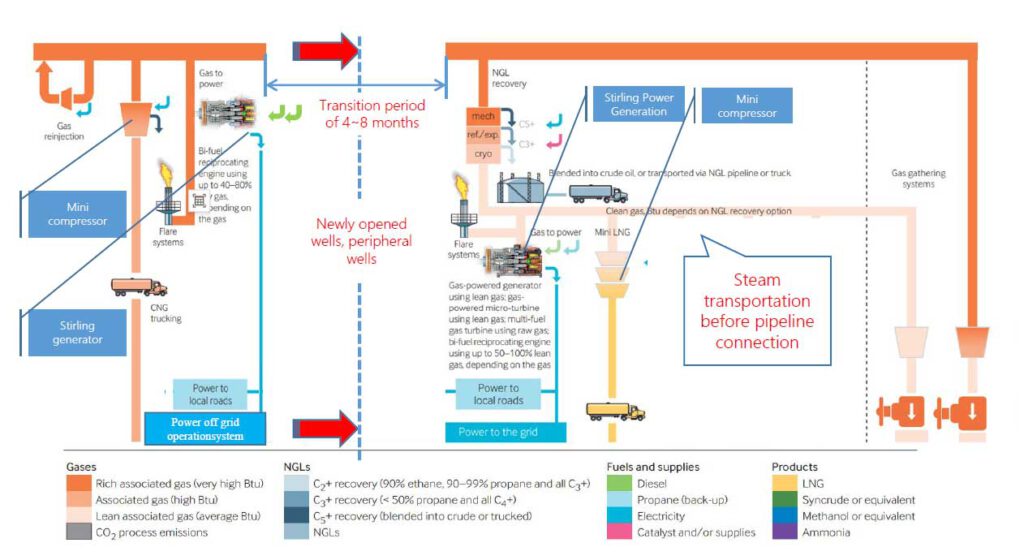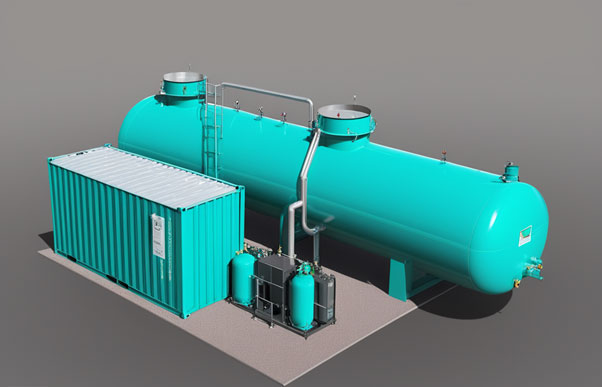Gas2Power
Associated Gas Utilization: A Sustainable Solution
What is Associated Gas?
Associated Gas
Associated gas is a natural byproduct of the oil extraction process, typically composed of gases like methane and ethane, as well as impurities such as liquid hydrocarbons, carbon dioxide, and hydrogen sulfide. When left untreated, this gas can pose serious safety risks, as it is highly flammable and can lead to dangerous explosions if it comes into contact with a spark.
Traditionally, associated gas is burned off in a process known as “flaring,” which, while safe, results in significant energy waste and contributes to air pollution.
Challenges with Traditional Methods

Corrosion
High sulfur content in associated gas causes corrosion in conventional power generation equipment like internal combustion engines and gas turbines.
Waste
Burning associated gas leads to substantial energy waste and exacerbates air pollution, making it an inefficient method of disposal.
Environmental Impact
Direct combustion of associated gas through "torching" releases harmful emissions into the atmosphere.
Advantages of Stirling Engine in Associated Gas, BOG Resource Utilization Strong
Stirling Engines: A Sustainable Solution

Strong corrosion resistance
Stirling engine is external combustion engine, the strong corrosiveness of the associated gas will not act on the internal running parts of the stirling engine, such as, piston, cylinder block, etc. are not in contact with the associated gas and the combustor, it has the absolute advantage and irreplaceability compared with the internal combustion engine
Multi-energy complementary heat and power cogenerating systems
Stirling generator sets can establish multi-energy complementary heat and power cogeneration system, use the heat of associated gas combustion, in accordance with the high, medium and low heat energy value chain, to build high-quality heat-oriented heat and power cogeneration system, it can provide industrial steam, industrial hot water, domestic hot water with the production of oil fields, to improve "energy saving, emissions eduction"flexible and diverse integrated energy services.
Miniaturized and distributed skid mounted structure
According to the dispersed and unstable nature of oil wells and associated gas, Stirling generator sets can be set up as skid-mounted power conversion platforms ranging from 5 to 300 kilowatts according to the flow rate of the associated gas and the regional electric power needs.
High efficiency, low noise
The comprehensive efficiency of the system can reach 80%or more, which is much higher than that of internal combustion engine, gas turbine and steam turbine engine in terms of energy saving and emission reduction.
Two units can be utilized in the oil extraction site and centralized treatment station : associated gas and BOG

Gas2Power Product
Gas2Power 50kW
Gas2Power 100kW
Gas2Power 250kW
Gas2Power 500kW

Energy module for cogeneration of heat and power from associated gas with the following specifications
- Skid-mounted, movable energy modules of 25 kW, 50 kW, 100 kW, 200 kW 1 for single machine
- 200 kW, 300 kW, 400 kW, 500 kW and other fixed modules
- Heating value: equipped with the generator set
Combined Heat & Power System For Associated Gas & BOG
Main characteristics of the system
Fully automated off-grid system for independent isolated grid operation;
Remote control, fault diagnosis;
Comprehensive energy supply system with tripleproduction of heat, electricity and cooling to meet the energy needs of well areas and centralized treatment areas;
"Containerized" and "skid-mounted" for easy transportation and movement;
It can be directly used in the well area, centralized treatment station, oil terminal, natural gas terminal, refinery and other associated gas, BOG resource utilization, without purification treatment;
Power supply and heat supply for newly opened wells and peripheral wells before electricity and pipeline access
Additional Equipment
Mini CNG Compression System
The mini CNG compression system offers another layer of efficiency by compressing associated gas and BOG up to 200 times. Key specifications include:
- Gas output: 100–450 Nm³ per hour.
- Inlet pressure: 0.1–0.3 MPa, with a discharge pressure of 25 MPa.
- Air-cooled, skid-mounted design for easy integration with Stirling engines, eliminating the need for external electricity.
By utilizing associated gas and BOG more effectively, these systems support energy-saving initiatives and reduce harmful emissions, aligning with global efforts toward cleaner, more sustainable energy practices.
